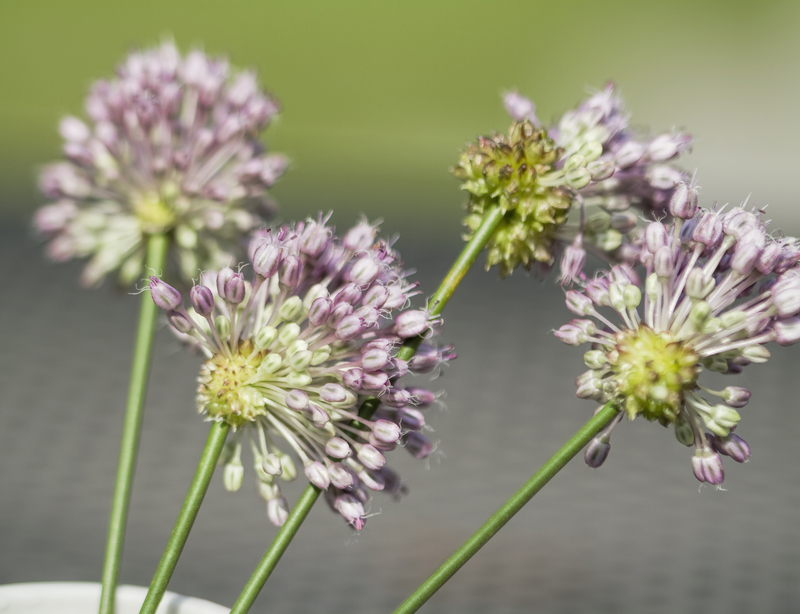Harnessing Nature: Strategies for Handling Garden Winds
Posted on 04/07/2025
Gardeners and landscape designers often face one persistent challenge: how to manage the impact of wind in the garden. While a gentle breeze can invigorate plants and keep pests away, strong, persistent winds can wreak havoc on both plant life and garden structures. In this comprehensive article, we will explore sustainable, effective, and innovative strategies for harnessing nature to cope with and manage garden winds. Learn how to transform a windy garden into a thriving, wind-resilient paradise.
Understanding the Effects of Wind on the Garden
Before implementing wind management strategies, it's essential to grasp how wind affects your garden and its flora. Garden winds can:
- Dehydrate Plants: High winds increase water loss from leaves, stressing plants and sometimes causing leaf burn.
- Cause Physical Damage: Strong gusts may break stems, snap branches, or uproot tender seedlings.
- Disrupt Pollination: Excessive winds can make pollination more difficult by dispersing pollen prematurely.
- Erode Soil: Constant winds may dry out and erode garden soil, leading to lost nutrients and poor plant health.
- Cool Temperatures: Wind lowers the temperature, exposing plants to chill and frost even in milder conditions.
Understanding these impacts is the first step toward embracing and harnessing nature when handling garden winds. By selecting the right wind mitigation strategies, gardeners can reduce damage and encourage a healthier, more sustainable garden environment.

Assessing Wind Patterns in Your Garden
No two gardens experience wind in exactly the same way. Key factors influencing wind movement include:
- Site elevation and exposure
- Proximity to water bodies, hills, or buildings
- The surrounding landscape and existing vegetation
To devise effective garden wind strategies, observe the wind over different times, noting:
- Prevailing wind direction
- Peak wind speeds (during storms or seasons)
- Areas most affected by wind turbulence or buffeting
Use your findings to create a tailored plan for dealing with wind in the garden.
Natural Windbreaks: Your Garden's First Line of Defense
Natural windbreaks are some of the most effective ways to harness nature for handling winds. They interrupt, slow, and redirect air currents, offering protection for delicate plants and creating new microclimates.
Planting Trees as Windbreaks
Rows of trees are classic windbreaks. To maximize efficiency:
- Choose hardy, wind-resistant species such as pines, firs, or cypresses.
- Stagger trees in multiple rows for denser protection.
- Space trees close enough to form a living fence.
- Consider native species that thrive in your climate and support biodiversity.
Hedges and Shrubs as Wind Shields
Thick hedges and robust shrubs, such as holly, privet, hawthorn, and boxwood, work effectively to diffuse strong winds. For best results:
- Layer shrubs of different heights to trap wind at various levels.
- Maintain healthy, bushy growth with regular pruning.
- Mixed native hedges offer greater resilience and ecological benefits.
Living Fences with Vines and Climbing Plants
For a greener, softer solution, grow vines such as wisteria, ivy, or honeysuckle on trellises and pergolas. These act as semi-permeable windbreaks and can be an attractive feature in any garden landscape.
Engineered Solutions for Wind Protection
While natural vegetation is preferable, incorporating smart structural elements is often necessary for managing garden winds, particularly in urban gardens or exposed locations.
Permeable Fences and Screens
- Opt for fences that allow some air passage, like louvered panels, slatted wooden fences, or mesh screens.
- Solid barriers may create turbulence by redirecting wind force downward. Semi-open designs can dissipate wind energy more effectively.
- Position fences perpendicular to prevailing winds for optimal protection.
Strategically Placed Structures
- Raised beds and retaining walls act as wind buffers for smaller, more delicate plants.
- Sheltered benches and seating areas invite relaxation and offer respite from the wind.
- Use garden art, large containers, or decorative screens as functional windbreaks.
Wind-Tolerant Plant Selections
Native and adapted plants usually handle wind better than exotic or delicate species. For a garden that thrives despite the breeze, select tough, flexible plants:
Best Wind-Tolerant Trees, Shrubs, and Perennials
- Sea buckthorn and tamarisk for coastal exposure
- Juniper, cotoneaster, and escallonia as sturdy hedges
- Echinacea, rudbeckia, and lavender for resilient flowering borders
- Ornamental grasses like miscanthus or pampas grass which bend gracefully without snapping
Plant wind-resistant species in vulnerable spots, leaving more protected areas for sensitive plants.
Soil Management and Mulching for Windy Gardens
Wind dries and erodes unprotected soil, robbing plants of nutrients and stability. To maintain healthy beds and borders:
- Mulch generously with bark, straw, or compost to lock in moisture and prevent surface erosion.
- Establish groundcovers, such as creeping thyme or ajuga, for living soil armor.
- Avoid bare soil--open spaces are prone to wind desiccation and loss.
- Water deeply but less often to encourage deeper root growth and drought resistance in plants.
Microclimates: Creating Sheltered Spaces Within Your Garden
Creating microclimates--sheltered zones that escape the worst winds--can make a tremendous difference in garden productivity. You can achieve this by:
- Positioning walls, hedges, or tall plants to funnel and slow wind in strategic areas
- Locating sensitive plants behind existing structures or denser parts of the garden
- Grouping pots and planters tightly to minimize wind exposure
With a careful layout, your garden can feature diverse growing conditions and a cozy refuge for delicate species, even in blustery regions.
Harnessing the Power of the Wind: Sustainable Approaches
Rather than solely fighting against the wind, some gardeners find ways to work with nature's forces. Consider these innovative ideas:
Wind as Natural Pest Control
Windy gardens are less hospitable to aphids, fungal diseases, and some harmful insects. Use this to your advantage by:
- Positioning vulnerable crops in naturally breezy areas to deter common pests
- Spacing plants adequately to promote air circulation and reduce humidity
Energy and Kinetic Features
- Installing wind chimes or kinetic sculptures that harness wind energy for movement and sound, adding artistic flair and excitement to your outdoor space.
- In larger gardens, small-scale wind turbines can power lights or garden pumps, making your landscape more sustainable.
Garden Design Techniques for Wind Management
Smart design is the foundation for handling garden winds. Here are essential tips:
- Orient main planting beds perpendicular to the prevailing wind direction for maximum sheltering effect.
- Layer plantings from tallest to shortest to create a stair-step wind-lifting effect.
- Build mounds or berms to deflect low-level winds and protect lower-growing vegetation.
- Install arbors, trellises, or pergolas with climbing plants for both wind protection and beauty.
Seasonal Wind Management Tips
Seasonal changes bring variations in wind strength and direction. Prepare your garden with these year-round strategies:
- Autumn and Winter: Use windbreak fabric or burlap screens to protect evergreens and young trees during gales.
- Spring: Stake fast-growing annuals and new perennials to guard against sudden winds.
- Summer: Provide extra irrigation and mulching to counteract increased evaporation.
Regular evaluations, annual pruning, and adaptive planting keep your wind management measures effective all year long.

Frequently Asked Questions About Handling Garden Winds
Can I block all wind in my garden?
No. It's important to diffuse, not eliminate, wind. Some airflow is crucial for plant health, reducing mold, mildew, and certain pests.
How high should a windbreak be?
An effective windbreak's sheltered zone typically extends 5 to 10 times its height on the leeward (downwind) side. A 2-meter hedge can protect for up to 20 meters.
What are the best plants for a windy garden?
Select tough, flexible varieties: juniper, hawthorn, sea buckthorn, lavender, ornamental grasses, and hardy evergreen shrubs.
Conclusion: Creating Wind-Resilient Gardens
Embracing and harnessing nature is key to managing wind in the garden. By blending living windbreaks, smart design, structural solutions, and strategic plant choices, you can transform even the breeziest site into a thriving, productive retreat.
Remember: Understanding your garden's unique wind patterns is the first step. Adopt a holistic approach, integrating both natural and engineered strategies.
With care, creativity, and informed planning, every gardener can successfully meet the challenge of handling wind--cultivating a haven where both plants and people flourish.

